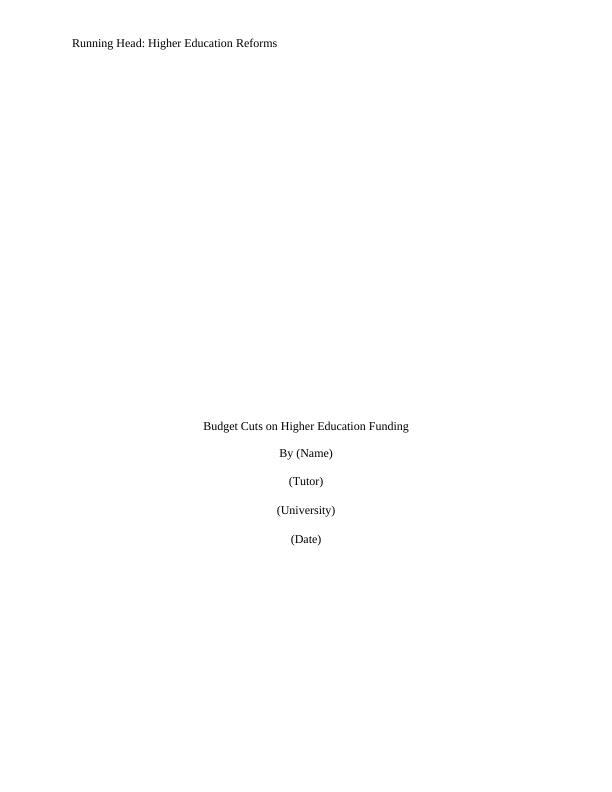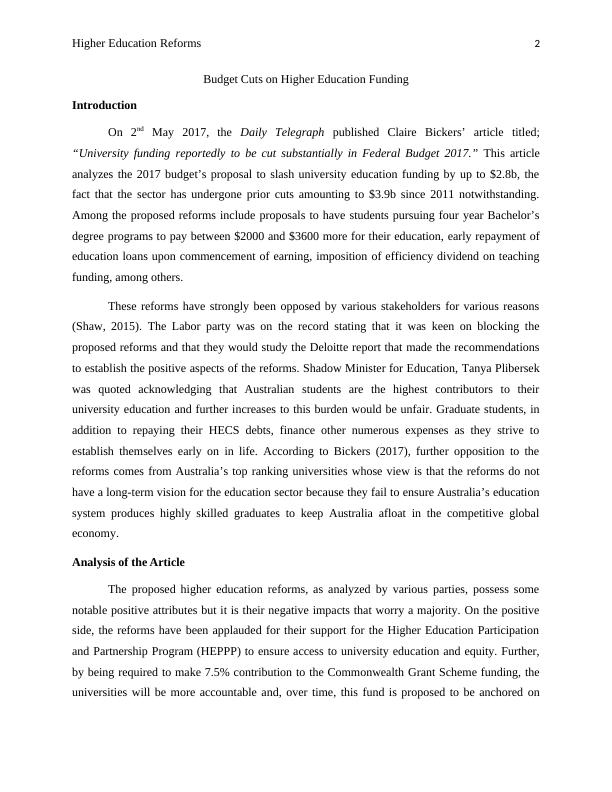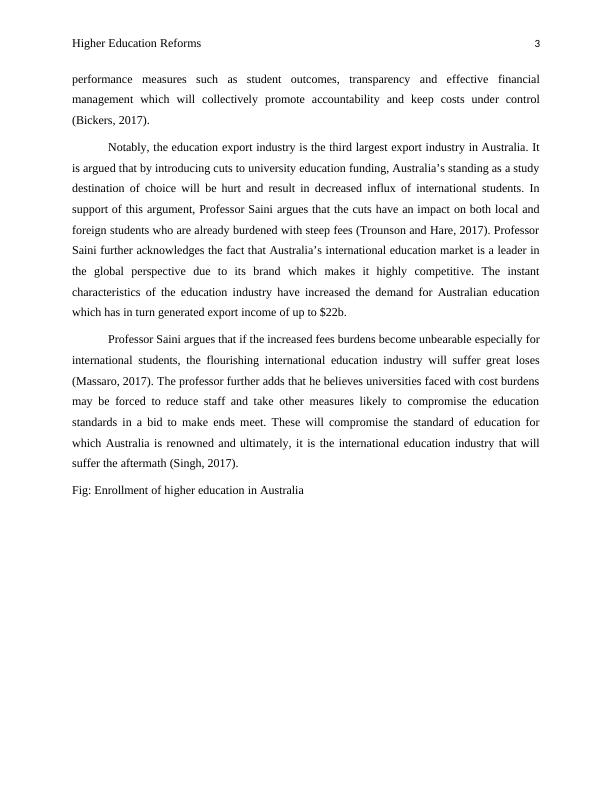Higher Education Reforms | Article - SPD-500
7 Pages1510 Words67 Views
grand canyon university
Added on 2020-03-07
About This Document
SPD-500 - The following article is written on the topic Higher education reforms. It majorly fouses on Budget cuts on Higher education funding. This article analyzes the 2017 budget’s proposal to slash university education funding by up to $2.8b. The issues revolve around bugdeting cut. In support of this argument, Professor Saini argues that the cuts have an impact on both local and foreign students who are already burdened with steep fees.
Higher Education Reforms | Article - SPD-500
grand canyon university
Added on 2020-03-07
ShareRelated Documents
End of preview
Want to access all the pages? Upload your documents or become a member.
HI5003 - Economics For Business- Report
|8
|1543
|52
Reforms in Australian Education Industry - Assignment - EDUF2006
|7
|1456
|41
ECON 1005 - Reforms In The Australian Education Sector - Economics For Business
|8
|1360
|64
EMV501 - Reforms in Australian Education Industry | Assignment
|7
|1490
|73
AGRI10047 - REFORMS IN THE AUSTRALIAN DAIRY INDUSTRY
|8
|1684
|82
Reforms in Australian Education Reforms
|5
|1365
|32



